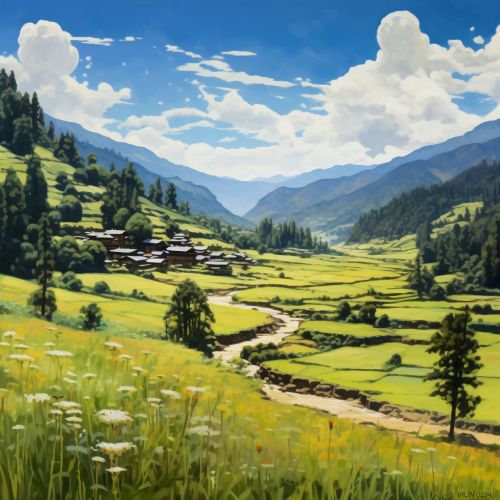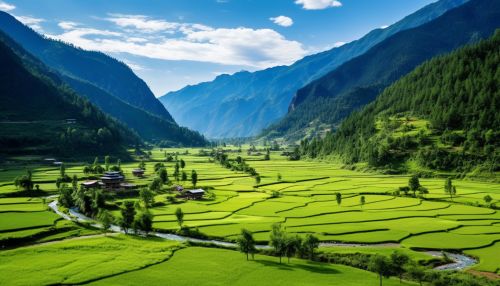Bhutan
Geography


Bhutan, officially known as the Kingdom of Bhutan, is a landlocked country in South Asia. It is located in the Eastern Himalayas, bordered by China to the north and India to the south, east and west. The country's landscape ranges from subtropical plains and forests in the south to subalpine forests and snowy mountains in the north. Bhutan's highest peak, at 7,570 metres (24,840 ft) above sea level, is Gangkhar Puensum, which is also a strong candidate for the highest unclimbed mountain in the world.
History
Bhutan's early history is steeped in mythology and remains obscure. It may have been inhabited as early as 2000 B.C., but not much was recorded until the introduction of Buddhism in the 9th century. When Guru Rinpoche (Padmasambhava) brought Buddhism to Bhutan, he also ushered in an era of documentation and the Bhutanese historical record began.
In the 12th century, the Drukpa lineage of the Kagyu school of Tibetan Buddhism became dominant in Bhutan. The nation-state of Bhutan was unified in the 17th century by Zhabdrung Ngawang Namgyal; who codified a comprehensive system of laws and built dzongs which acted as both administrative centers and monasteries.
Politics
Bhutan is a constitutional monarchy with a parliamentary form of government. The reigning monarch is Jigme Khesar Namgyel Wangchuck. The Government of Bhutan has been a constitutional monarchy since 18 July 2008. The King of Bhutan is the head of state. The Prime Minister of Bhutan is the head of government and is appointed by the King. There are plans to increase the government's democratic nature by introducing more political parties and improving education about democracy.
Economy
Bhutan's economy is based on agriculture, forestry, tourism and the sale of hydroelectric power to India. Agriculture provides the main livelihood for more than 60% of the population. Agrarian practices consist largely of subsistence farming and animal husbandry. Handicrafts, particularly weaving and the manufacture of religious art for home altars, are a small cottage industry.
Culture
Bhutanese culture is deeply steeped in and influenced by Buddhism. Due to its largely unspoiled natural environment and cultural heritage, Bhutan has been referred to as The Last Shangri-la. The national dress for Bhutanese men is the gho, a knee-length robe tied at the waist by a cloth belt known as the kera. Women wear an ankle-length dress, the kira, which is clipped at one shoulder and tied at the waist. Social status and class determine the texture, colours, and decorations that embellish the garments.
